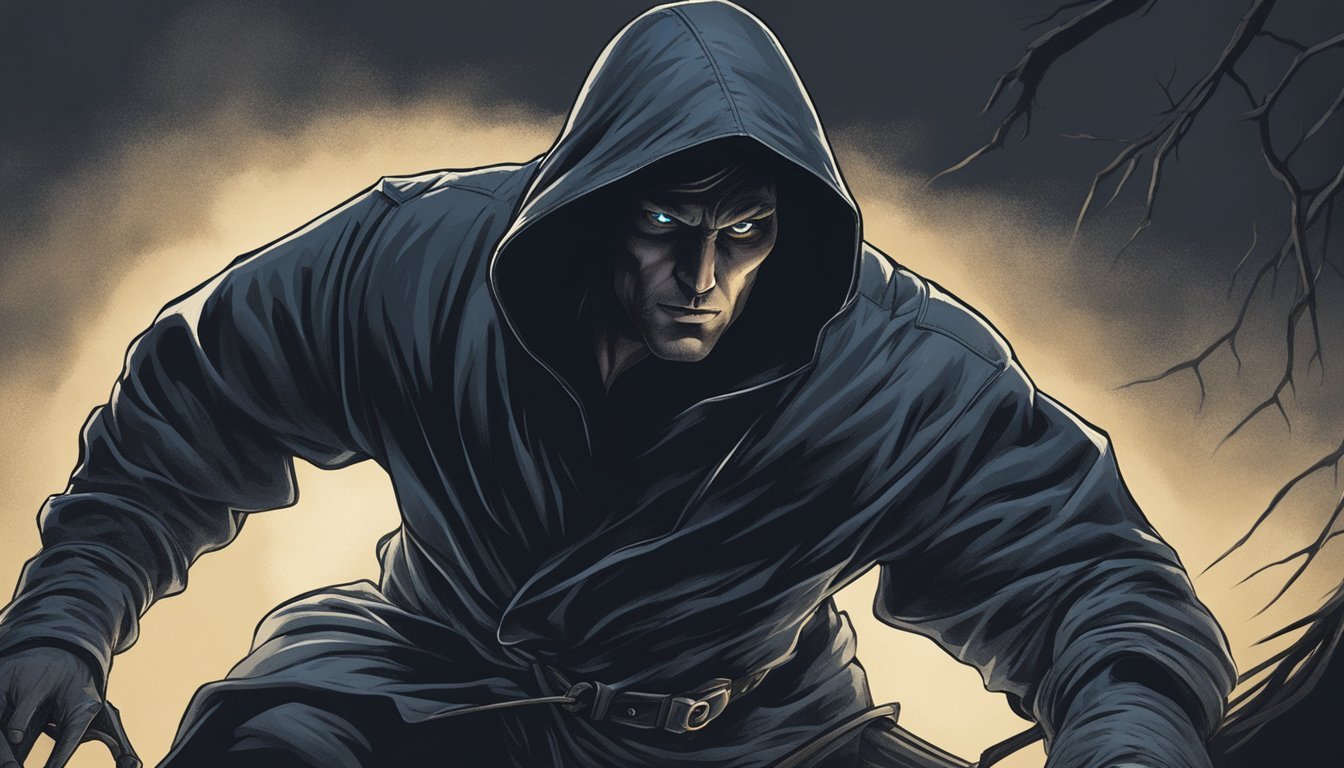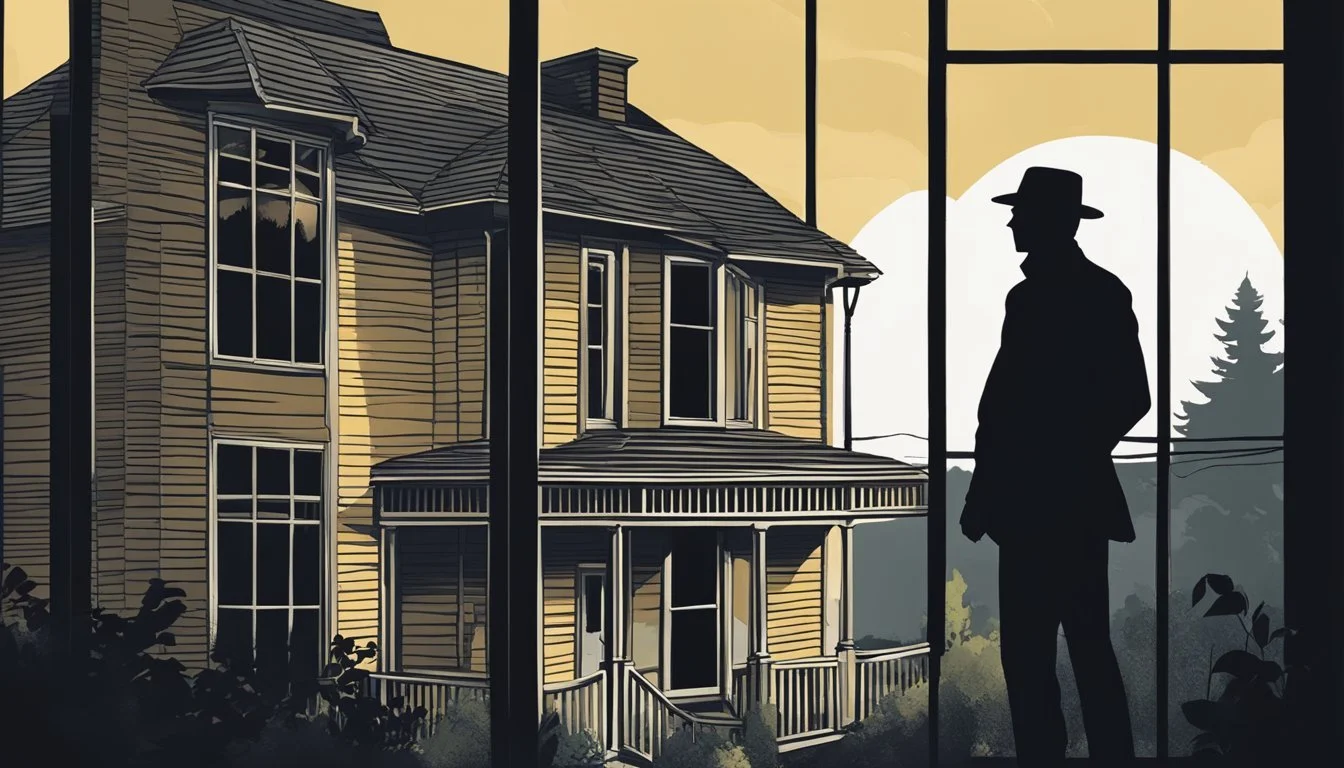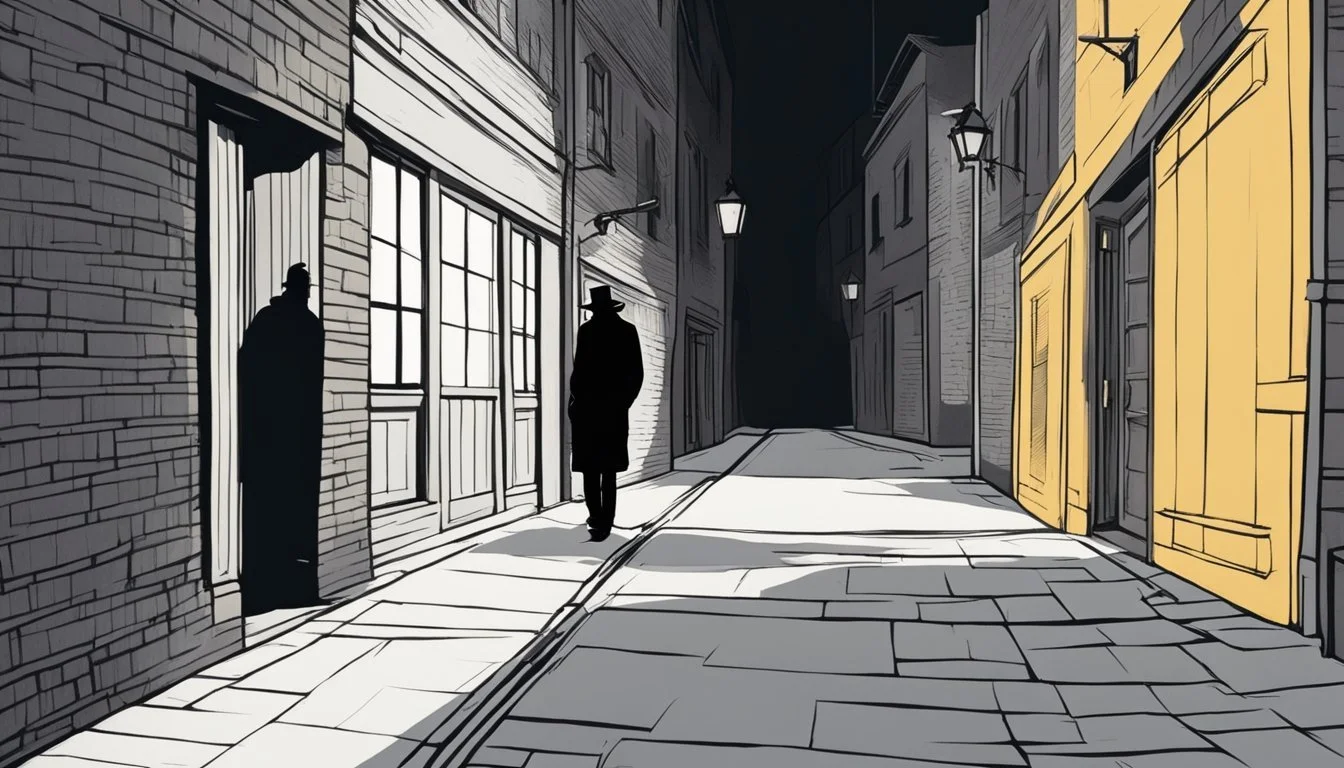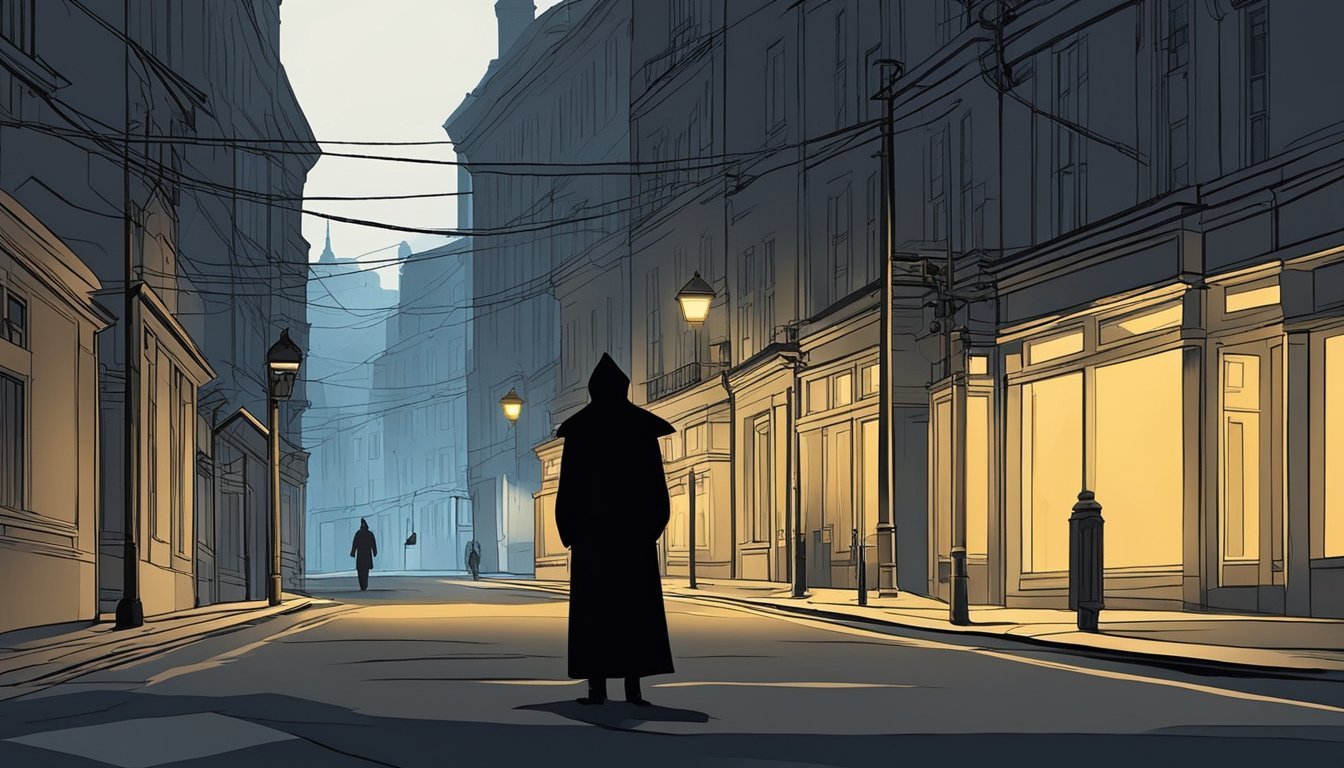The Night Stalker by Philip Carlo: Definitive Account of Richard Ramirez's Reign of Terror
Philip Carlo's "The Night Stalker" offers a chilling exploration of Richard Ramirez, one of America's most notorious serial killers. Based on extensive research and interviews with Ramirez himself, Carlo's book provides an unparalleled look into the mind of a murderer. The author's meticulous approach reveals disturbing details about Ramirez's life and crimes that surpass even the most sensationalized media accounts.
Carlo's work traces Ramirez's descent into violence from a young age, including witnessing a murder at just eleven years old. The book delves into the nineteen death sentences Ramirez received and the bizarre twists in his case, such as a juror who developed romantic feelings for the killer. Through Carlo's storytelling, readers gain insight into the factors that shaped Ramirez's murderous path.
"The Night Stalker" stands out in the true crime genre for its comprehensive examination of Ramirez's life and crimes. Carlo's writing style engrosses readers, presenting a stark portrait of a killer whose actions terrorized California in the 1980s. The book serves as both a gripping narrative and a sobering study of the darker aspects of human nature.
Author Background
Philip Carlo established himself as a prominent true crime writer, known for his in-depth research and compelling narratives. His work on "The Night Stalker" solidified his reputation in the genre.
Philip Carlo's Career
Carlo grew up in Bensonhurst, Brooklyn, surrounded by Mafia influence. At 16, he survived a gunshot wound to the head during a gang conflict. This experience sparked his interest in crime writing.
Carlo's literary career began with "The Night Stalker," which chronicled Richard Ramirez's crimes. The book's success led to more true crime works, including "The Ice Man" and "Gaspipe."
His writing style combined meticulous research with a knack for storytelling. Carlo often conducted extensive interviews with his subjects, including convicted killers.
Influence in True Crime Genre
Carlo's approach to true crime writing set new standards in the genre. He delved deep into the psychology of criminals, offering readers insights into their motivations and backgrounds.
His work on "The Night Stalker" was praised for its comprehensive coverage and multi-faceted perspective. Critics compared it to Truman Capote's "In Cold Blood" for its narrative style.
Carlo's books often featured exclusive interviews and previously undisclosed information. This level of detail and authenticity helped cement his reputation as a leading true crime author.
His influence extended beyond writing, as his works became reference points for criminologists and law enforcement professionals.
Richard Ramirez Overview
Richard Ramirez, known as the Night Stalker, was a notorious American serial killer who terrorized Los Angeles in the 1980s. His crimes shocked the nation and left a lasting impact on true crime history.
Early Life and Background
Richard Ramirez was born on February 29, 1960, in El Paso, Texas. He grew up in a troubled household marked by domestic violence and substance abuse. As a teenager, Ramirez began using drugs and developed an interest in Satanism.
His cousin, a Vietnam War veteran, exposed him to disturbing violence and gore at a young age. This early exposure likely influenced Ramirez's later criminal behavior.
Ramirez dropped out of high school and moved to California in his late teens. He supported himself through petty theft and burglary, gradually escalating to more serious crimes.
Path to Notoriety
Ramirez's killing spree began in June 1984 and lasted until August 1985. He broke into homes at night, brutally attacking and killing his victims. His crimes were characterized by extreme violence, sexual assault, and Satanic rituals.
The media dubbed him the "Night Stalker" due to his nocturnal attacks. Ramirez's crimes spread fear throughout Los Angeles and San Francisco.
Law enforcement launched a massive manhunt to capture him. In August 1985, Ramirez was identified and arrested after his image was widely publicized.
His trial in 1989 resulted in 13 death sentences. Ramirez's unrepentant attitude and devotion to Satanism attracted a cult following during his incarceration.
Overview of The Night Stalker
Philip Carlo's "The Night Stalker" provides a chilling account of Richard Ramirez's life and crimes. The book offers an in-depth exploration of the serial killer's background, motivations, and the impact of his actions on victims and society.
Genesis of the Book
Carlo spent years meticulously researching Ramirez's case and conducting extensive interviews with the killer himself. This thorough approach allowed the author to paint a comprehensive picture of Ramirez's disturbing life and criminal activities.
Carlo's background as a true crime writer and his experience with other high-profile cases contributed to the book's depth and authenticity. His access to Ramirez provided unique insights into the killer's mindset and experiences.
The author's dedication to uncovering the truth behind the Night Stalker's crimes resulted in a work that goes beyond sensationalism, offering readers a nuanced understanding of Ramirez's twisted psyche.
Main Themes
"The Night Stalker" delves into several key themes throughout its narrative. One primary focus is the exploration of Ramirez's troubled childhood and the factors that may have contributed to his descent into violence.
The book examines the impact of Ramirez's crimes on his victims and their families, highlighting the long-lasting trauma inflicted by his actions. Carlo also investigates the cultural fascination with serial killers and the media's role in shaping public perception of these criminals.
Another significant theme is the investigation process and the challenges faced by law enforcement in capturing Ramirez. The book details the detective work and breakthroughs that ultimately led to his arrest.
Investigation and Capture
The hunt for the Night Stalker involved intense police work, meticulous crime scene analysis, and crucial public assistance. These combined efforts ultimately led to Richard Ramirez's arrest and brought an end to his reign of terror.
Los Angeles Police Department's Role
The LAPD formed a dedicated task force to track down the Night Stalker. Detectives worked tirelessly, analyzing patterns in the attacks and compiling evidence. They conducted extensive interviews with survivors and witnesses, creating a profile of the suspect. The police also increased patrols in high-risk areas and coordinated with other law enforcement agencies across Southern California.
Investigators faced challenges due to the seemingly random nature of the crimes and the lack of a clear modus operandi. Despite these obstacles, the LAPD's persistence and resourcefulness played a crucial role in narrowing down potential suspects.
Crime Scene Analysis
Forensic experts meticulously examined each crime scene, collecting fingerprints, DNA samples, and other physical evidence. They analyzed shoe prints, ballistic evidence, and any items left behind by the killer. This careful examination revealed a partial fingerprint on a car window at one of the crime scenes.
The breakthrough came when investigators matched this print to Ramirez's fingerprints on file from a previous arrest. This crucial piece of evidence allowed police to identify Ramirez as the prime suspect and obtain a warrant for his arrest.
Public's Involvement
The public played a vital role in the capture of Richard Ramirez. Media coverage of the crimes heightened awareness, and citizens were on high alert. The release of Ramirez's photograph to the public on August 30, 1985, proved to be a turning point in the investigation.
On August 31, 1985, residents of East Los Angeles recognized Ramirez from the widely circulated photo. They chased him, successfully detained him, and alerted the police. This civilian intervention led to Ramirez's arrest, ending his 14-month killing spree and bringing relief to a terrified community.
Legal Proceedings
Richard Ramirez's trial was one of the longest and most expensive in California history. The proceedings resulted in his conviction on multiple counts of murder and other charges. Subsequent appeals failed to overturn the verdict.
Trial
The trial of Richard Ramirez began on July 22, 1988, in Los Angeles. It lasted over a year and cost an estimated $1.8 million. Prosecutors presented overwhelming evidence, including DNA matches, ballistics, and witness testimony from over 100 individuals.
Ramirez's erratic behavior in court, including drawing pentagrams and yelling "Hail Satan," added to the sensational nature of the proceedings. His defense team argued he was insane, but this strategy ultimately failed.
Conviction
On September 20, 1989, the jury found Ramirez guilty on 13 counts of murder, 5 attempted murders, 11 sexual assaults, and 14 burglaries. The trial judge imposed 19 death sentences, the maximum allowed under California law at the time.
Ramirez showed no remorse, telling reporters: "Big deal. Death always went with the territory. See you in Disneyland."
Aftermath and Appeals
Ramirez was sent to San Quentin State Prison's death row. His case went through numerous appeals over the next two decades. In 2006, the California Supreme Court upheld his convictions and death sentences.
Ramirez died of natural causes on June 7, 2013, at age 53, before his execution could be carried out. His long-delayed punishment frustrated victims' families, who had hoped to see justice fully served.
DNA technology advancements later linked Ramirez to additional unsolved crimes, expanding understanding of his reign of terror beyond the original convictions.
Cultural Impact
Philip Carlo's book "The Night Stalker" significantly shaped public perception of Richard Ramirez and influenced true crime media. The work's detailed account of Ramirez's crimes and psychology captivated readers and sparked broader discussions.
Media Coverage
Carlo's book generated extensive media attention, reigniting interest in the Night Stalker case years after the initial crimes. News outlets and true crime programs frequently referenced the book's revelations about Ramirez's background and motives.
The detailed interviews with Ramirez provided new insights that fueled documentaries and television specials. These productions often cited Carlo's work as a primary source, amplifying its reach beyond the written page.
Print and online publications regularly featured excerpts and reviews of "The Night Stalker," keeping the story in the public eye. The book's success contributed to a surge in true crime literature focused on in-depth examinations of notorious killers.
Influence on Popular Culture
"The Night Stalker" left an indelible mark on popular culture, inspiring various fictional portrayals of serial killers. Television shows and films drew elements from Carlo's depiction of Ramirez, incorporating similar character traits or crime patterns into their narratives.
The book's exploration of Ramirez's psychology influenced how writers and directors approached the portrayal of criminal minds in entertainment. It contributed to a trend of more nuanced and complex depictions of serial killers in media.
True crime podcasts frequently discussed Carlo's work, analyzing its content and impact. The book became a reference point for discussions about the ethics of true crime reporting and the public's fascination with serial killers.
Critical Reception
"The Night Stalker" by Philip Carlo received mixed reviews from literary critics and readers. The book's detailed research and gripping narrative style drew both praise and criticism.
Literary Criticism
Critics lauded Carlo's extensive research and in-depth portrayal of Richard Ramirez's life and crimes. Many praised the author's ability to create a vivid, chilling account of the Night Stalker's reign of terror. Some reviewers commended Carlo's balanced approach, noting his efforts to explore Ramirez's background and motivations without excusing his actions.
Critics also highlighted the book's atmospheric writing, which effectively conveyed the fear that gripped Los Angeles during Ramirez's killing spree. The detailed descriptions of crime scenes and police investigations were seen as strengths by many reviewers.
However, some critics found fault with Carlo's writing style, describing it as sensationalistic at times. A few reviewers expressed concern over the graphic nature of certain passages, arguing that they bordered on exploitation.
Reader Response
Readers generally responded positively to "The Night Stalker." Many found the book to be a compelling and informative true crime account. Numerous readers praised Carlo's thorough research and his ability to present a comprehensive picture of Ramirez's life and crimes.
The book's pacing and narrative structure were frequently cited as strengths, with readers describing it as a "page-turner" that kept them engaged throughout. Many appreciated Carlo's efforts to provide context for Ramirez's actions by exploring his troubled childhood and family history.
Some readers, however, found the graphic descriptions of violence disturbing. A subset of reviewers felt that Carlo's portrayal of Ramirez was too sympathetic at times, though others appreciated the nuanced approach to the killer's psychology.
Further Readings
For those interested in delving deeper into true crime and serial killer cases, several books and resources complement "The Night Stalker" by Philip Carlo. These works offer additional perspectives on infamous criminals and investigative techniques.
Similar Works
"The Killer Across the Table" by John E. Douglas and Mark Olshaker provides insights into the minds of four notorious serial killers. "I'll Be Gone in the Dark" by Michelle McNamara details the hunt for the Golden State Killer. "The Devil in the White City" by Erik Larson intertwines the stories of a serial killer and the 1893 Chicago World's Fair. These books offer comparable deep dives into criminal psychology and investigative processes.
"Helter Skelter" by Vincent Bugliosi and Curt Gentry explores the Charles Manson murders. It shares similarities with Carlo's work in its comprehensive examination of a notorious killer and the impact on society.
Related Non-Fiction
"Mindhunter" by John E. Douglas and Mark Olshaker details the development of criminal profiling at the FBI. This book provides context for understanding law enforcement approaches to serial killers.
"The Cases That Haunt Us" by John E. Douglas examines unsolved or controversial cases, offering expert analysis. It complements "The Night Stalker" by providing broader perspectives on criminal investigations.
"Whoever Fights Monsters" by Robert K. Ressler and Tom Shachtman offers insights from a pioneering FBI profiler. This book enhances understanding of the investigative techniques used in cases like Richard Ramirez's.
Conclusion
Philip Carlo's "The Night Stalker" offers a comprehensive look into the life and crimes of Richard Ramirez. The book provides readers with a detailed account of Ramirez's disturbing actions and the investigation that led to his capture.
Carlo's extensive research and interviews with Ramirez himself contribute to the book's authenticity. The author's background growing up in a crime-heavy area of Brooklyn lends additional credibility to his perspective.
The book explores Ramirez's troubled upbringing, including witnessing a murder at age eleven. It also delves into the psychological aspects of his crimes and the fear he instilled in Los Angeles during the 1980s.
"The Night Stalker" stands as a significant work in the true crime genre. It presents a thorough examination of one of America's most notorious serial killers, offering insights into both the criminal and the investigation process.
Readers interested in true crime literature will find Carlo's work to be a detailed and compelling account of Richard Ramirez's life and crimes. The book serves as a stark reminder of the impact of violent crime on communities and individuals.








